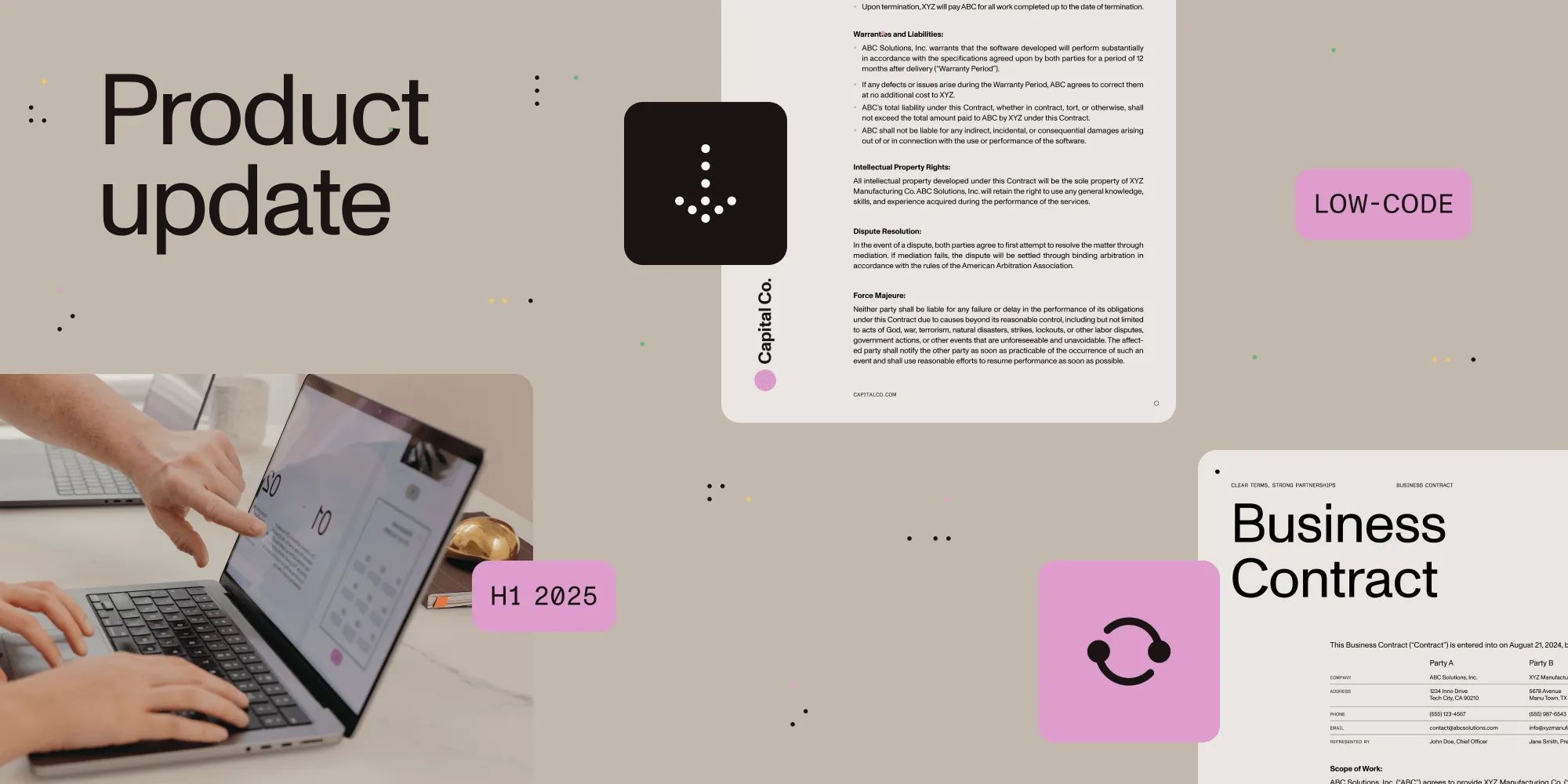Automatically watermarking Word, Excel, PowerPoint and PDF files
Table of contents

Try Nutrient Document Converter
Nutrient Document Converter has expanded its powerful watermarking capabilities beyond PDFs to now support Word, Excel, and PowerPoint files. Whether you’re working in SharePoint, in Power Automate, or via our API, you can now apply dynamic watermarks using the same workflows you’re already familiar with. This includes real-time watermarking, document security, and support for text, images, QR codes, barcodes, and user-specific metadata.
Nutrient Document Converter has long supported adding various watermark types to PDF files. These could be triggered from SharePoint Online, SharePoint on-premises, Power Automate, or our API. Watermarks supported include:
- Text
- Images
- QR codes
- Barcodes
Until now, this feature was limited to PDF files.
We’re excited to announce that watermarking is now available for Microsoft Word, Excel, and PowerPoint files as well. Even better, it works exactly like watermarking PDF files — same APIs, same coordinate system, same experience.
Extended file security for Office files
Alongside watermarking, we’ve also extended our file security features to support MS Word, Excel, and PowerPoint. For details, check out this blog post.
This functionality is already available in:
- SharePoint Online
- Power Automate
- REST API
There’s no extra setup needed — it’s enabled by default for all users.
For on-premises users, this is available starting with version 10.1 of:
- Nutrient Document Converter for SharePoint on-premises(opens in a new tab)
- Nutrient Document Converter Services(opens in a new tab)
Common use cases for watermarking
- Display document status (e.g. Draft, Final, Confidential)
- Add user-specific data on open (e.g. IP address, username)
- Protect intellectual property
- Compliance and metadata display
- Add legal disclaimers or branding
- Barcode/QR code integration
SharePoint Designer workflows
You can now add watermarks — including barcodes — to Word, Excel, PowerPoint, and PDF files using SharePoint Designer workflows.
Supported barcode types include: Codabar, Code11, Code32, Code39, Code128 (A/B/C), GS1Code128, Code93, and more.
Nintex Workflow
Nintex remains a popular choice for SharePoint on-premises users. All watermark types supported by our engine are available in Nintex Workflow.
The text watermark action is particularly powerful, as it supports:
- Dynamic content
- Rotation
- Formatting
- Positioning
- Word wrapping
Power Automate, Power Apps, and Logic Apps
Our watermarking capabilities are fully exposed in Power Automate, Power Apps, and Logic Apps. Use the image watermark action to automatically apply watermarks to any supported file.
Check out our Power Automate tutorials.
Real-time watermarking
Real-time watermarking applies watermarks as documents are opened, not stored. This enables:
- User-specific watermarking (“Opened by John Miller at IP 192.168...”)
- Light DRM for document tracking and auditing
See real-time watermarking guides for:
Caveats and limitations
Watermarking across formats comes with some caveats:
- Modern Office formats only — Only DOCX, XLSX, and PPTX are supported.
- Layering — Watermarks are placed behind content; transparency may be needed.
- Page targeting — Only PDFs and PowerPoint allow targeting specific pages.
- MS Word headers — Watermarks require headers to be present in each section.
- Coauthoring disabled — For real-time watermarking in SharePoint on-premises, coauthoring is turned off.
- Office web apps — Use “Open in client application” to ensure watermarking applies properly.
- Repeated watermarking — Avoid applying new watermarks on every open/save cycle. Use filters or read-only folders.
- RTF watermarks — Not supported in PowerPoint.
- Excel headers/footers — At least one slot must be free of images to apply watermarks.
Conclusion
This is a major upgrade to how watermarking can be applied across Office and PDF files using Nutrient’s tools. Have questions? Get in touch with us — we’re happy to help!






